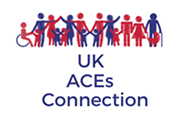By Andrew Anthony, The Guardian, June 2, 2019.
Stephen Porges is professor of psychiatry at the University of North Carolina and “Distinguished University Scientist” at Indiana University, where he has created the Traumatic Stress Research Consortium. He is best known for developing polyvagal theory, which describes how visceral experiences affect the nervous system and our resulting behaviour. On Monday 10 June, he will be giving a talk at Love vs Trauma, the Body & Soul charity’s day-long symposium in London, which aims to tackle issues surrounding childhood adversity and trauma. Other participants include Peter Fonagy and Lemn Sissay.
Can you explain polyvagal theory in layperson’s terms?
Polyvagal theory articulates three different branches of the autonomic nervous system that evolved from very primitive vertebrates to mammals. And it’s quite interesting how the sequence evolved. First, you have a system that is really an ancient one, which is death feigning or immobilisation. Then it has a fight or flight system, a mobilisation system. Then finally, with mammals, you have what I call a social engagement system, which can detect features of safety and actually communicate them to another. When you trigger feelings of safety, the autonomic nervous system can help health restoration. In terms of dealing with a life threat, you most likely go into this feigning death, dissociative state.
We hear a lot about fight or flight instincts but less about immobilisation. But is that in fact the most common response to traumatic experiences?
Yes, immobilisation is the critical point of the experience of life-threat trauma events. It used to be assumed by trauma therapists that stress was a fight-flight reaction. But that’s not what the survivors of trauma described. They were describing this inability to move, the numbness of the body and functionally disappearing. And that’s what polyvagal theory described. So when I started giving talks in the trauma world, the theory had tremendous traction because the survivors of trauma said: “This is what I experienced.” And they had been confronted with a world that said: “That’s not what you experienced; why didn’t you fight?”

Comments (0)